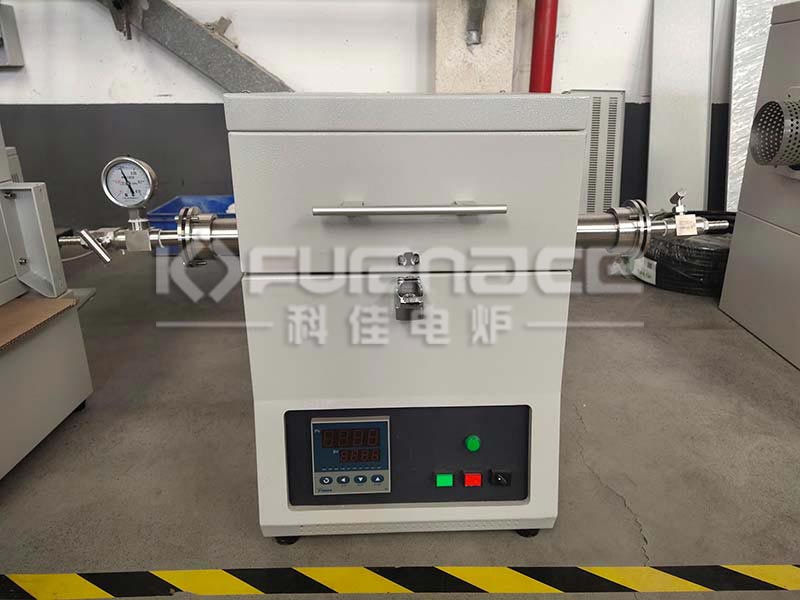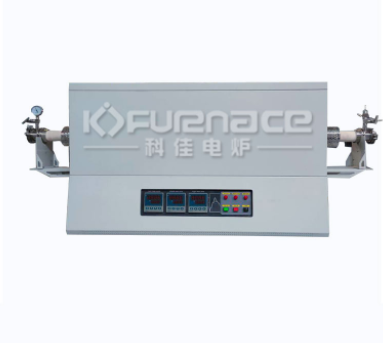Laboratory small tube furnaces are commonly used heat treatment equipment in materials science, chemistry, physics, and other fields, suitable for experiments such as powder sintering, crystal growth, and material annealing. When choosing, factors such as temperature, atmosphere, size, safety, and ease of operation should be comprehensively considered. Let’s take a detailed look at what to pay attention to when choosing a small tube furnace for laboratory use!

Commonly used tube furnace (click on the image to view product details)
1. Core parameter selection
Temperature range and temperature control accuracy
Maximum temperature: Select according to experimental requirements. The temperature range of common laboratory tube furnaces is 1000 ℃ -1700 ℃. For example:
Metal oxidation experiment: 1000 ℃ -1200 ℃;
Ceramic sintering: 1400 ℃ -1600 ℃;
High temperature alloy treatment: above 1600 ℃.
Temperature control accuracy: Prioritize equipment within ± 1 ℃ to ensure experimental reproducibility. The PID intelligent temperature control system can reduce temperature fluctuations.
Heating rate: Depending on the thermal shock resistance of the material, rapid heating (such as 10 ℃/min) is suitable for heat-resistant materials, while slow heating (such as 5 ℃/min) can reduce thermal stress.
Furnace tube material and size
Material:
Quartz tube: high temperature resistant (below 1100 ℃), transparent and easy to observe, but prone to react with strong alkali;
Corundum tube (alumina): high temperature resistance (above 1600 ℃), good chemical stability, suitable for acidic or alkaline atmospheres;
Metal tubes (stainless steel, alloy): suitable for reducing atmospheres (such as hydrogen), but may deform at high temperatures.
Size:
Inner diameter: Choose according to the sample size, commonly ranging from 20mm to 100mm;
Length: The laboratory commonly uses 300mm-1200mm, and space needs to be reserved for placing crucibles or brackets.
Atmosphere control ability
Vacuum function: If an anaerobic environment is required, choose a tube furnace with a mechanical pump (vacuum degree can reach 10 ⁻ Pa);
Gas inlet: supports the inlet of inert gases (nitrogen, argon) or reducing gases (hydrogen), and requires flow meters and gas purification devices;
Sealing: Flange connection or O-ring sealing design to prevent gas leakage.
2. Functional and safety design
Operational convenience
Program temperature control: supports multiple heating programs (such as heating insulation cooling), and can store commonly used process curves;
Data recording: Built in or external data acquisition system to record temperature time curves;
Observation window: Quartz tube furnaces can be equipped with observation windows to monitor the status of samples in real time.
safety protection
Overtemperature alarm: Automatic power-off when the temperature exceeds the set value;
Leakage protection: prevent the risk of electric shock;
Gas leak detection: Sensors are required when flammable gases such as hydrogen are introduced;
Emergency stop: One click stop of heating and gas supply.
3. Experimental requirement matching
Material Type
Metal: requires reducing atmosphere (hydrogen) or vacuum to prevent oxidation;
Ceramic: High temperature corundum tube, supporting oxidizing atmosphere;
Semiconductor: high vacuum+inert gas to avoid impurity contamination.
Batch and Size
Small batch: Choose short furnace tubes (300mm-600mm) to save space;
Long samples: require furnace tubes of over 1000mm or segmented processing.
scalability
Modular design: supports subsequent upgrades of vacuum pumps and gas purification devices;
Interface compatibility: Reserved thermocouple and pressure sensor interfaces.
4. Operation and maintenance suggestions
Pre use inspection
Confirm that there are no cracks in the furnace tube and the sealing ring is intact;
Test gas inlet and vacuum pump function;
Heat up to the highest temperature without load and check the temperature control accuracy.
routine maintenance
Regularly clean the oxide inside the furnace to prevent short circuits;
Apply high-temperature lubricating grease when replacing the sealing ring;
Avoid frequent rapid cooling and heating to extend the lifespan of the furnace tube.
Safety Specifications
Keep away from sources of ignition when introducing hydrogen gas and equip with an exhaust system;
Wear protective gloves and goggles during operation;
After the experiment is completed, turn off the gas first, then cool down to below 100 ℃, and then turn off the power.
5. Typical application scenarios and selection cases
Preparation of metal oxides: 1200 ℃, quartz tube, air atmosphere, programmed temperature control
Ceramic sintering: 1600 ℃, corundum tube, nitrogen protection, multi-stage heating
CVD coating: 1000 ℃, quartz tube, hydrogen/methane mixed gas, vacuum pretreatment
Material annealing: 800 ℃, stainless steel tube, argon protection, slow cooling
case
A certain laboratory needs to sinter the positive electrode material (LiCoO ₂) for lithium-ion batteries, requiring 1000 ℃, air atmosphere, and temperature control accuracy of ± 1 ℃. Choose a 1200 ℃ quartz tube furnace from Kejia Electric Furnace, equipped with N-type thermocouples and programmable temperature controllers to meet experimental requirements.

A commonly used experimental multi temperature zone tube furnace (click on the image to view product details)
In summary, when choosing a small tube furnace for laboratory use, attention should be paid to the above aspects. It is recommended to communicate with relevant technical personnel about the parameters you want before purchasing, so as to customize a smaller tube furnace that is more suitable for your own experiment!Click to learn more Experimental tube furnaces! Or click on online customer service to learn more about product information!